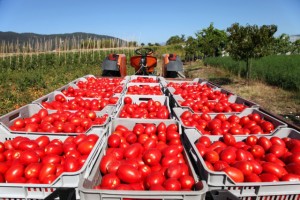Florida researcher finds way to cut cost, save water and help the environment by changing one simple thing
30 Jul
Published 7/28/15
Sanjay Shukla looked out over row upon row of tomato and pepper plants and had an idea: What would happen if he made the compacted soil rows taller and more narrow? Would the plants need less water, fertilizer and fumigation? Would the plants grow as tall? Would the plants produce as many vegetables?
And so, instead of planting rows that were normally 6 to 8 inches high and about 3 feet across, the University of Florida professor planted them 10 inches to a foot high and 1 ½ to 2 feet across. Instead of needing two drip lines to irrigate each row, they required only one. In addition, they needed fewer square feet in plastic mulch covering. He calls it “compact bed geometry” or “hilling.”
Shukla, who specializes in agricultural and biological engineering, was astounded by the answers.
Not only did the tall narrow rows grow the same amount of vegetables, they retained more fertilizers – reducing what would have leached into groundwater – and they would need half the amount of water. In addition, he cut fumigation rates for pests by as much as 50 percent.
Read entire article at this link:



No comments yet